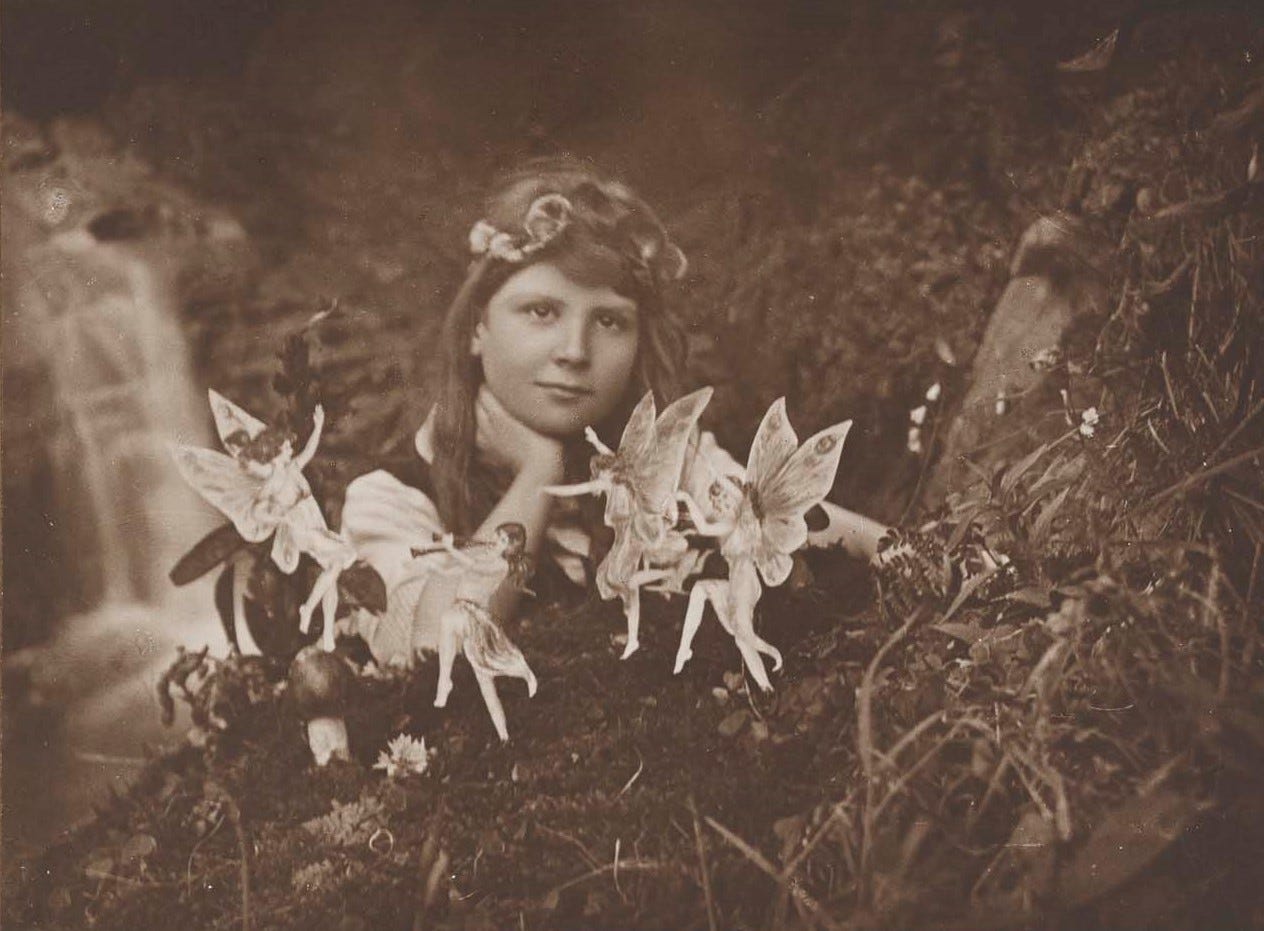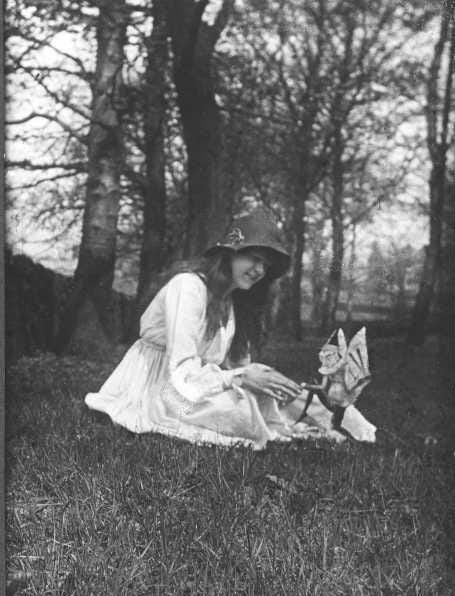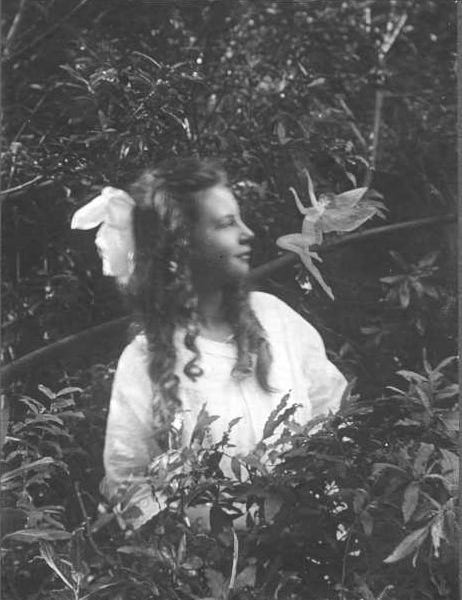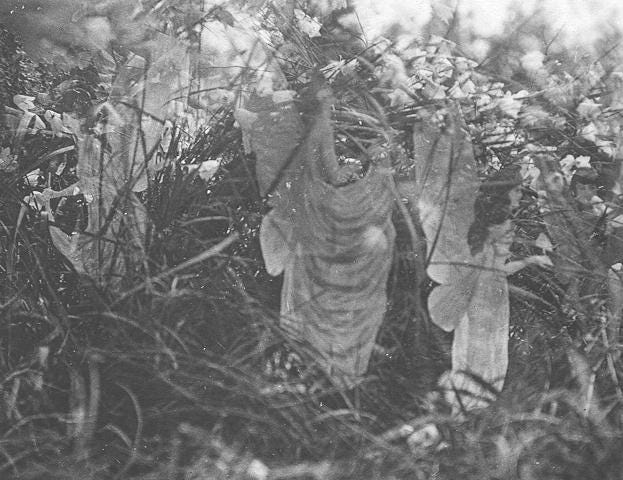
Paper cutouts, some hatpins and a borrowed camera.
That’s all two cousins needed to convince millions — including the author of Sherlock Holmes — that fairies frolicked throughout the English countryside.
In 1917, nine-year-old Frances and her mother came to live with Elsie’s family in Cottingley, a village in West Yorkshire, while Frances’s father served in World War I. Sixteen-year-old Elsie often took her younger cousin to play in the Cottingley Beck, a small stream behind the family house.
When the girls’ mothers admonished them for getting their shoes wet, the cousins insisted they only frequented the brook to play with the fairies. Elsie borrowed her father’s camera and the next day produced what she claimed to be evidence: the now-infamous photograph of Frances in a flower crown, posing alongside four playful-looking fairies as the Beck babbles in the background.

Elsie’s father instantly discounted the picture as a childish prank; he knew Elsie and Frances liked to play pretend, and though Elsie wasn’t a professional photographer, she’d interned at a nearby studio and watched her father play around with the camera. But Elsie and Frances’s mothers weren’t so sure. They attended a local lecture on fairy folklore and brought the photographs along, asking for experts to weigh in — and pandemonium ensued.
By 1920, the photographs were a bona fide sensation. The girls’ names had originally been changed to “Iris” and “Alice” in the captions, but after Sir Arthur Conan Doyle had seen the images himself, he sent an ambassador to Yorkshire to inspect the Beck, the photo negatives and, of course, the girls themselves. Doyle’s agent walked away convinced, insisting the “transparent honesty and simplicity” of Elsie and Frances discounted the possibility of a hoax.


Doyle published an article about the phenomenon and sent the girls two compact cameras to capture more images. In the summer of 1920, the girls obliged, producing three more images, all of which Doyle had assessed by a photography expert named Harold Snelling and “fairy authority” Kenneth Styles.
Styles was suspicious; the fairies, he noted, seemed to be quite up-to-date on the latest British fashions. Why would supernatural creatures have such chic hairstyles? But Snelling proclaimed himself astonished. There was no way, he insisted, that two small girls could have faked these photographs.

After that, Cottingley was overrun with fairy tourists. The English were still reeling from the bloodshed of World War I, and enthusiasm for spiritualism and the occult swept many into un-fairylike frenzies. Doyle continued sending envoys to Cottingley, pressing the girls to produce more images, but by 1921, Elsie and Frances declared themselves “fed up with fairies.”
Decades later, after the fairy fever had passed, the girls admitted in an interview that they had faked the photographs and encouraged belief “out of mischief.” Elsie had simply posed her cousin amidst a collection of paper cutouts she’d doctored with hatpins and handdrawn wings. As Frances said of the photos’ unexpected virality:
I never even thought of it as being a fraud – it was just Elsie and I having a bit of fun and I can't understand to this day why they were taken in. They wanted to be taken in.
But while Elsie confessed to having doctored all five images, Frances insisted that the final photograph captured live fairies living in Yorkshire.
The cousins died two years apart; Frances in 1986, Elsie in 1988. Frances died claiming that “Fairies and Their Sun-Bath” was real; to this day, some believe it is.
More on 🧚:
The Cottingley Fairies, by Ana Sender
The Cottingley Fairies: A Study In Deception, Google Arts & Culture
Inside the Elaborate Hoax That Made British Society Believe in Fairies, TIME
How Princess Mary's Gift Book Sparked a Belief in the Existence of Fairies, BookRiot



